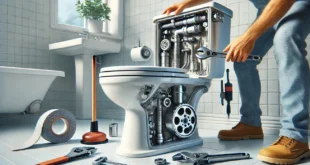The future of millwork shop drawings is on the cusp of a major transformation, driven by advancements in artificial intelligence (AI) and automation. As the demand for precision and efficiency in construction projects grows, these technologies are poised to reshape the way millwork design and drafting are approached.
In the USA, where the construction and architectural sectors are embracing digital innovation, AI and automation promise to streamline processes, reduce human error, and enhance the overall quality of millwork shop drawings.
This blog will explore the exciting potential of these technologies, examining how they will influence the future of
millwork drafting, improve workflows, and create new opportunities for designers, fabricators, and construction professionals.
From automating repetitive tasks to enabling more complex and accurate designs, the integration of AI and automation is set to revolutionize the millwork industry, bringing faster turnarounds and more sophisticated results.
What is AI and Automation in Millwork Shop Drawings?
AI (Artificial Intelligence) and automation are transforming how millwork shop drawings are created. Traditionally, these drawings were made manually, requiring hours of detailed work. Today, AI and automation are speeding up the process, reducing errors, and increasing efficiency.
AI in millwork drawing involves using software to automate tasks that were once done by hand. For example, AI can generate precise measurements, suggest design improvements, and check for errors automatically. This not only saves time but also ensures that the drawings are more accurate, making the construction process smoother.
Automation plays a crucial role in using technology to handle repetitive tasks like drawing lines, filling in details, or creating 3D models of the millwork. These tools can quickly create accurate, high-quality drawings with less human input, allowing professionals to focus on more complex aspects of the design. For example, automated systems can generate cabinet layouts, door and window details, and custom woodwork patterns without the need for manual drawing.
Incorporating AI and automation into millwork shop drawings also helps with collaboration. These technologies allow multiple teams to access and update the same drawing in real time, reducing communication issues and delays. Overall, AI and automation are making millwork design faster, more accurate, and easier to manage, benefiting both designers and contractors alike.
The Current Landscape of Millwork Shop Drawings
Millwork shop drawings play a crucial role in the modern construction and design industries. These detailed, technical drawings provide a clear representation of custom woodwork and cabinetry, helping manufacturers and contractors understand the design and specifications before the building begins. The landscape of millwork shop drawings has evolved significantly, especially with the adoption of advanced technology.
Today, many millwork shop drawings are created using digital tools like CAD (Computer-Aided Design) and BIM (Building Information Modeling). These tools allow for more precision, faster revisions, and better collaboration between designers, builders, and clients.
CAD and BIM enable designers to create highly accurate, 3D models that can be easily modified, improving the overall quality and efficiency of the design process.
Also, the use of cloud-based platforms has made it easier for teams to share and access shop drawings in real time, streamlining communication and reducing errors.
This is especially valuable in complex projects where multiple parties need to work together.
While traditional hand-drawn methods are still used in some cases, the trend toward digital solutions continues to grow. As the demand for more detailed, accurate, and sustainable designs increases, millwork shop drawings are becoming more sophisticated, offering greater flexibility and improving the overall construction workflow.
Benefits of AI and Automation in Millwork Shop Drawings
AI and automation are transforming the millwork industry, making shop drawings more efficient, accurate, and cost-effective. One of the key benefits is the speed at which tasks are completed.
AI can quickly generate detailed drawings and designs, reducing the time needed for manual drafting. This allows millwork teams to focus on other important aspects of the project, speeding up the overall workflow.
Automation also ensures a higher level of accuracy. With AI tools, the risk of human error is minimized, leading to more precise measurements and specifications.
This is especially critical in millwork, where every detail counts, from dimensions to material choices. Automated systems can also flag potential issues, like conflicts between different parts of the design, before they become costly problems.
Another advantage is the ability to customize designs with ease. AI-powered software can quickly adjust dimensions and layouts based on client preferences or specific project needs. This flexibility enhances the design process, allowing for more creative solutions while maintaining precision.
Also, automation helps with project management by tracking progress and managing resources efficiently. It allows for better scheduling and budgeting, ensuring that deadlines are met without overspending.
Real-World Applications of AI and Automation in Millwork Shop Drawings
In the world of millwork, AI and automation are transforming how shop drawings are created and managed. These technologies are helping designers and manufacturers save time, reduce errors, and improve efficiency. One key application is in the design process.
AI-powered software can automatically generate detailed millwork drawings based on simple input, such as room dimensions or materials. This significantly speeds up the drafting process and allows designers to focus on creativity instead of manual drafting.
Automation also plays a crucial role in error detection. AI can quickly identify discrepancies in the drawings, such as missing components or mismatched measurements, helping to avoid costly mistakes during manufacturing. By catching these issues early, AI helps ensure that the final product is accurate and meets all specifications.
Another benefit is the integration of AI with CNC machines. Once the millwork drawings are complete, the data can be directly fed into CNC machines, allowing for faster and more precise fabrication. This reduces the need for manual intervention, speeding up production and minimizing human error.
AI and automation are also improving collaboration. Cloud-based systems enable team members to access the most up-to-date drawings from anywhere, streamlining communication between architects, designers, and manufacturers.
This leads to better coordination and a smoother workflow, ultimately enhancing the overall project timeline and
outcome.
In summary, AI and automation are revolutionizing millwork shop drawings by improving design accuracy, efficiency, and collaboration in the industry.
Conclusion
The integration of AI and automation into millwork shop drawings marks the beginning of a new era in the construction and design industries. These technologies are transforming the way designs are created, offering improved speed, accuracy, and efficiency.
By automating repetitive tasks and reducing human error, AI and automation ensure that millwork designs are more precise, customized, and tailored to client needs.
As the adoption of digital tools like CAD, BIM, and cloud-based platforms continues to grow, the role of AI and automation in millwork is becoming even more prominent. From enhancing collaboration between teams to speeding up production with CNC machine integration, these advancements are streamlining workflows and improving project outcomes.
Looking ahead, the future of millwork shop drawings in the USA will be characterized by faster turnarounds, fewer mistakes, and greater opportunities for creative and sophisticated designs.
As AI and automation continue to evolve, they will not only redefine how millwork is drafted but also open new doors for innovation and excellence in the industry. With these technologies, millwork professionals are well-equipped to meet the growing demands of modern construction and deliver exceptional results.
 Our Gateway to Insightful Blogging Exploring Ideas, Sharing Knowledge, Inspiring Minds
Our Gateway to Insightful Blogging Exploring Ideas, Sharing Knowledge, Inspiring Minds



